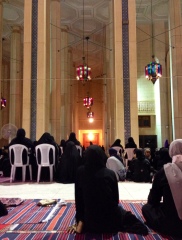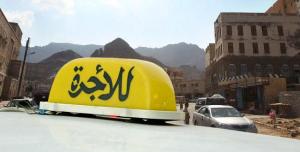 When I think of Britain, I don’t think of a society so “rife” with promiscuity and drunkenness that it’s very moral fibre is in need of repair. Call me naive, but I usually imagine red telephone boxes, Mister Darcy, imperialism, fish & chips, curry houses, and Doctor Who. But according to a mini-series from 2007 called ”Make Me a Muslim,” Britain is so horribly off track with naked women in the streets and hooligans living hedonistic lifestyles, that things are going to get much worse unless something stops this social degeneration. What Britain needs is an infusion of “decency, respect and moderation.”
When I think of Britain, I don’t think of a society so “rife” with promiscuity and drunkenness that it’s very moral fibre is in need of repair. Call me naive, but I usually imagine red telephone boxes, Mister Darcy, imperialism, fish & chips, curry houses, and Doctor Who. But according to a mini-series from 2007 called ”Make Me a Muslim,” Britain is so horribly off track with naked women in the streets and hooligans living hedonistic lifestyles, that things are going to get much worse unless something stops this social degeneration. What Britain needs is an infusion of “decency, respect and moderation.”
So let’s make everyone Muslim.
“Make Me a Muslim” was a three part series aired by Channel 4 in the UK and followed a group of non-Muslim volunteers from the town of Harrogate in Yorkshire while they “lived under Islamic law” for three weeks. It popped up in my feed reader a couple of weeks ago when BBC Three aired another ingeniously titled documentary, “Make Me a Muslim.” This unconnected 2013 installment follows Shanna Bukhari, the first Muslim to compete for the title of Miss Universe Great Britain, as she learns what it’s like to practice Islam from a group of white women converts who have given up partying and drinking.
Since the convert party girl exposé is sooo last year, I thought it might be interesting to revisit the 2007 series and its specific focus on sharia law. I was curious to know how they were going to present Islam and depict a group of non-Muslims abiding by a system of religious norms that have vast interpretations, implementations and practices throughout the world, as well as within Britain. Unfortunately, my initial optimism was dashed the moment episode one opened by polarizing a modern and immorally broken British society, with the ancient religious values that can supposedly fix it.
To test the theory that Islam can save Britain, Imam Ajmal Masroor and his crack team of Muslim Mentors help six non-Muslims (and one “lapsed Muslim”) learn what it’s like to live under the principal tenets of Islam and sharia law — namely, no alcohol, no pork, no sex outside marriage, modesty, fasting and prayer. While I was hoping for more discussion on the nuances and reasons why Muslims are enjoined to pray and maintain levels of modesty, the series instead holds true to the performance of reality TV: They take an extremely surface understanding of Islam, enforce it on a group of people who aren’t Muslim by choice, throw in a group of stereotypical and at times ridiculous Muslim characters, and watch the sparks fly while both groups clash.
The understanding of sharia is not exactly explained, as much as it’s simply narrated in a two-second sound-bite as a system of law based upon the teachings of the Qur’an. The actual defining of sharia is left to Phil, a beer-swilling, bacon eating, mildly xenophobic taxi driver, who confronts a Muslim Mentor about how, “Muslims want to impose sharia law on Britain,” and that “we don’t want the stoning of women and cutting hands off thieves on the streets of England.” Sharia is not explained as helping guide personal religious observance, but as “barbaric.” And while he is sincere in wanting to learn more about Islam and Muslims, Phil’s views on the “Islamization” of Britain are used to reinforce every negative stereotype about Islamic law.
The group’s initiation into Islam begins by a brief introduction to the five pillars and, much to my delight, with the Muhammad Asad translation of the Qur’an. The Muslim Mentors then purge the participants’ homes of all things “haram under Islamic law” — and the camera spends a lot of time showing alcohol being tossed down the drain and the confiscation of “frilly knickers.”
The really unfortunate presentation in this episode was the role of women in Islam. Which, for the purposes of tabloid entertainment, was reduced to the wearing of hijab.
After taking away bathing suits, skirts, and shirts unceremoniously deemed “immodest,” South London preacher and Muslim Mentor Mohammed explains that:
“The religion of Islam is a religion of prevention. A lot of women have been raped in England and all over the world. Why are women inviting it by wearing something that is [immodest]?”
This hijab-as-protection-from-sexual-abuse trope continues when Muslim Mentor and white convert Dawn explains hijab to Kerry, a glamour/soft porn model, “this is about protecting you and keeping you safe.”
Understandably, the female participants are outraged and their unwillingness to abide by “the rules of Islam” are exploited to illustrate that Islam is foreign, oppressive and misogynist. Even when Imam Ajmal comes in as the voice of reason, defining modesty as protecting society, encouraging humble behaviour and allowing people to interact with their personalities by not focusing on the “body beautiful” — it’s all done secondarily to the BIG DEAL that non-Muslim women feel oppressed and choked by long sleeves and a head scarf.
(more…)














